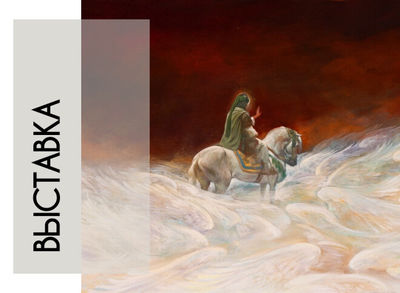Fourteen works produced over the past three years will be showcased at the exhibit entitled ''Painting of the Heart''.
Among the works selected for the exhibition, there are not only compositions imbued with subtle lyricism, with their detail and color dating back to the aesthetics of traditional Iranian miniatures and the classics of Iranian art of the 20th century, but also large battle scenes, exhibition curator lIya Zaitsev said in a atatement published by the Russian museum.
Ruholamin skillfully combines in his work the achievements of classical European painting with Islamic aesthetics, perception of the world and its history. In the center of the artist's creative search is the history of Islam, the place of man in the world.
In the canvases of Ruholamin, one can see the life of a suffering and loving heart, embodying all his tragic and at the same time bright religious experiences in paintings.
For the first time, the exhibition will put on view a large-scale painting named ''The Battle for Water'', dedicated to the events of the tragic battle of Karbala in 680, which became one of the turning points in Islamic historty.
His workd have previously been hung at solo exhibitions in several countries, including Belgium, France and Germany.
The exhibition, which will run until March 26, will be organized with contributions from the Russian Ministry of Culture and the Iranian Culture Center in Moscow.
Ruholamin, who is most famous for illustrating stories from the history of Islalm, has also created works on different official occasions.
One of the paintings was created last December to commemorater Lieutenant-General Qassem Soleimani on the third anniversary of his assassination.
A copy of the painting appeared on Tehran's largest billboard in Vali-e Asr Square afterwards.
Ruholamin also did ''The Apocalyptic Companion of Aba Abdillah'' to express his sympathy after General Soleimani was assassinated in a U.S. air raid in Baghdad on January 3, 2020.
Produced one day after the incident, the painting depicts General Soleimani's remains embraced by Imam Huissein (AS), the third Imam of the Shias.
Source:Tehran Times

